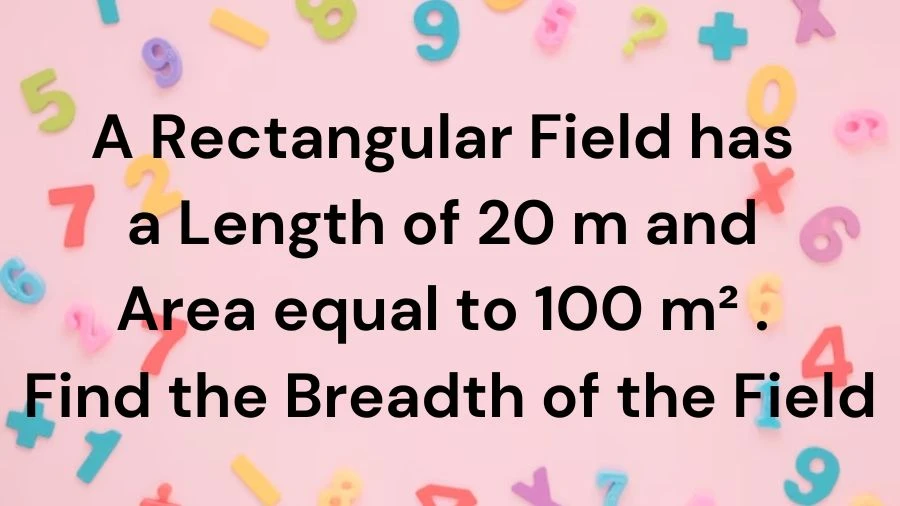If you happen to be viewing the article A Rectangular Field has a Length of 20 m and Area equal to 100 m² . Find the Breadth of the Field ? on the website Math Hello Kitty, there are a couple of convenient ways for you to navigate through the content. You have the option to simply scroll down and leisurely read each section at your own pace. Alternatively, if you’re in a rush or looking for specific information, you can swiftly click on the table of contents provided. This will instantly direct you to the exact section that contains the information you need most urgently.
Get the answer to the rectangular field puzzle: Length = 20m, Area = 100m². What’s the breadth? Find out here in simple steps!
A Rectangular Field has a Length of 20 m and Area equal to 100 m² . Find the Breadth of the Field
The Breadth of the Field is 5 metres
Explanation
The formula for the area of a rectangle is given by:
Area = Length × Breadth
In this case, you’re given the length (L) as 20 m and the area (A) as 100 m².
You can rearrange the formula to solve for the breadth (B):
B = A/L
Substitute the given values into the formula:
B = 100 m²/20 m
B = 5m
Therefore, the breadth of the rectangular field is 5 meters.
How to Find the Length and Breadth of Any Shapes?
Finding the length and breadth (sometimes also called width) of any shape depends on the specific shape itself! Each shape has its own set of rules and formulas for calculating these dimensions.
Here are some examples:
For basic shapes:
- Rectangle/Square: Use the formula Area = Length * Breadth and solve for the missing dimension if you know the other one. For squares, both sides are equal.
- Triangle: Different types of triangles require different approaches. Right triangles can use Pythagorean theorem with side lengths, while others may need specific angle measurements.
- Circle: You can find the circumference (total distance around) and use the formula Circumference = 2 * pi * Radius, then solve for the radius and multiply by 2 to get the diameter (longest straight line through the center).
For more complex shapes:
- Trapezoid: Depending on the information available, you might need formulas involving parallel sides, heights, and diagonals.
- Parallelogram: Similar to rectangles, but some may require additional information like angles.
- Polygons: These have multiple sides and angles, and calculations often involve trigonometry or specific formulas based on the number of sides.
Additionally:
- Knowing the perimeter (total length of all sides) of a shape can help in some cases, along with area, to derive formulas for dimensions.
- Visual aids like diagrams and drawings can be immensely helpful in understanding the relationships between sides and angles.
The key is to identify the specific shape you’re dealing with and then research the formulas or methods suitable for finding its length and breadth based on the information you have.
Thank you so much for taking the time to read the article titled A Rectangular Field has a Length of 20 m and Area equal to 100 m² . Find the Breadth of the Field written by Math Hello Kitty. Your support means a lot to us! We are glad that you found this article useful. If you have any feedback or thoughts, we would love to hear from you. Don’t forget to leave a comment and review on our website to help introduce it to others. Once again, we sincerely appreciate your support and thank you for being a valued reader!
Source: Math Hello Kitty
Categories: Math

